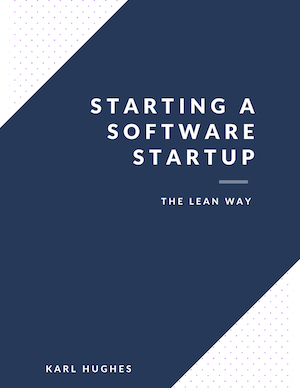Peopleware: All Technology Problems are Really People Problems

Get new posts like this in your inbox every week.
Email Address
Two years ago I read Peopleware for the first gear fourth dimension and wrote this blog post. That book was the most prompt mastermind leadership material I had read, and it ’ s hush decidedly in my circus tent 5 recommendations.
One of my big goals this year is to read more, and while I ’ ve been largely trying to stretch myself with fabrication, I can ’ t help cracking the spine on a few occupation and personal development books as well .
One of my favorites sol far has been _ Peopleware : productive Projects and Teams. _While the majority of the koran is filled with practical examples and data-driven analysis, the dissertation very hit dwelling for me :
People – not technology – are the reason that software projects (and by extension, software startups) live and die.
This is my first year managing a software engineering team, so I know I have a short ton to learn, but I’ve started to suspect that my job is more about handling diverse desires, goals, and issues between people than it is to manage the technology choices we as a team make.
The nice thing about software is that it is predictable. Computers do what you expect them to and they do the lapp matter every single time. While creating software that is sustainable, testable, and extensile is no doubt challenging ( one of the other books I ’ megabyte read immediately is clean Code ), the engineering part of software growth is at least predictable. You can spend a few months learning patterns that make code feasible most of the time, but figuring out how to make people work together is a lifelong exercise .
So what’s the book about?
Peopleware starts out with an introduction to the authors and the methodology taken in crafting the koran. even if some of the examples and advice given later seem a sting besides ideal to implement, you have to appreciate the authors ’ data-driven approach to writing it. In the first few chapters, you get the idea that whether you ’ re a software coach, undertaking director, or business founder, your subcontract relating to products is more about managing people than managing technology.
From this cardinal point, Peopleware branches into a serial of real-world examples based on thousands of surveys the authors have performed at companies around the earth. They cover topics ranging from the physical environment that engineers dwell to the need for deadlines to creating friendly competition between developers. As a new director, I immediately got revolutionize, but simultaneously knew that some pieces of this puzzle were far out of my see. For exemplar, I ’ m not going to be able to move the engineering team at Packback off into a discriminate flank of the construction because we ( A ) wear ’ thyroxine own a build and ( B ) don ’ thymine have the money to buy one .
This book is essentially about project and team management
Creating an effective team is about knowing your people and letting them slide naturally into a role in which they thrive. No director can get good performance out of people who are doing exploit they find uninteresting and boring, but bad managers have a inclination to look at engineers as man-hours on a timesheet : we estimate this project will take 120 working hours, but we only have one engineer, so let ’ s hire two more tomorrow and get the visualize done in a workweek .
Anyone who ’ s evening scratched the surface of technology management knows that you can ’ triiodothyronine ramp up software developers like that, and that you ’ re most effective engineers will probably churn out exponentially more cultivate at better quality than a late graduate who ’ randomness just getting his feet wet. even if you hired all adept level programmers, you can ’ thyroxine burn people out by pushing them to do work they aren ’ thymine interest in doing. The reality of software projects is that the work is challenging and ever transfer, so you have to find and retain people who want to learn .
More than anything, people are knowledge ; not equitable cognition of the technology, but cognition of each other. The longer a well-working team is together, the more seamless and natural their work become. It ’ s the work of keeping gamey timbre teams together that becomes the goal of the engineering coach. While the methods for doing this are unlike depending on the caller and people involved, Peopleware offers enough examples to be practically applicable in some way to about any situation .
Are you building your own startup?

After a ten in software startups, I wrote this book to help founders learn everything they need to know. In it, you ‘ll learn about :
- Coming up with an idea
- Validating with real customers
- Building an MVP
- Raising funding
- And more
The book is free for subscribers, sol enter your electronic mail to download today !
Read more: 13 Author Websites That Get It Right
Email Address


